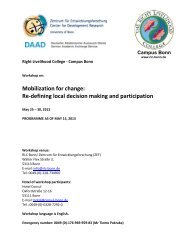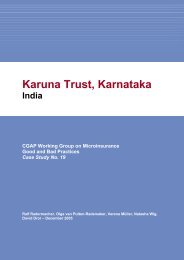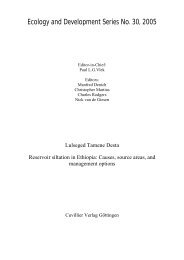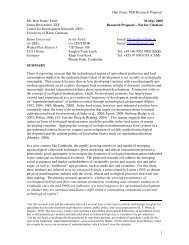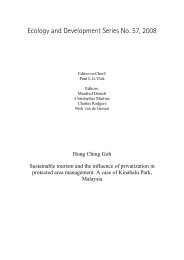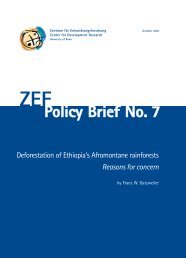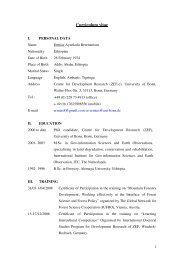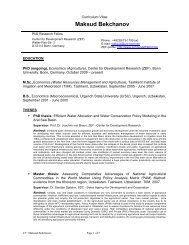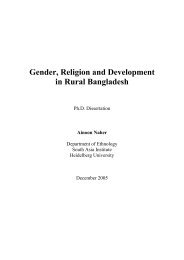Ecology and Development Series No. 10, 2003 - ZEF
Ecology and Development Series No. 10, 2003 - ZEF
Ecology and Development Series No. 10, 2003 - ZEF
- No tags were found...
Create successful ePaper yourself
Turn your PDF publications into a flip-book with our unique Google optimized e-Paper software.
Floristic analysis of the undisturbed forest1994). However, diversity decreases towards the north, <strong>and</strong> only few species common tothe rest of the East African Mountains are to be found in the Ethiopian highl<strong>and</strong>s (Friis etal. 1982; Tewolde 1991; Tamrat 1994).The results of this study show that Yayu forest is one of the most diverse forestsin Ethiopia with respect to plant species diversity. Several authors have studied theAfromontane forest vegetation of Ethiopia, i.e., the dry Afromontane forest (Tamrat 1994;Demel 1995; Demel <strong>and</strong> Tamrat 1995; Tadesse 1998) <strong>and</strong> the Afromontane rain forest(Friis et al. 1982; Friis 1992; Mesfin <strong>and</strong> Lisanework 1996; Abayneh 1998; Kumelachew<strong>and</strong> Tamrat 2002). Direct comparison of the species diversity with other forest is notfeasible due to differences in size of the forests, survey methods <strong>and</strong> objectives. However,the over all species richness of the forests can give a general impression of their diversity.In this regard, with about 220 plant species, Yayu forest excels other similar rain forestslike the Harrena forest, in SE Ethiopia (128 species; Mesfin <strong>and</strong> Lisanework 1996), <strong>and</strong> theBonga forest in SW Ethiopia (154 species; Friis et al. 1982). Other studies also show thatthe forests at Gore <strong>and</strong> Yayu are the richest in species (Friis et al. 1982). The number ofplant species in Yayu forest is also higher than that of most the dry Afromontane forests ofEthiopia; for example, Chilimo forest (90 species, Tadesse 1998); Jibat forest (54 species,Tamrat 1994); Dakata Valley forest (202 species, Demel 1995). Wofwasha forest is theonly forest known to have a higher number of plant species than Yayu, with more than 250species (Demel <strong>and</strong> Tamrat 1995).Yayu forest, however, is poor in the diversity of plant species endemic toEthiopia. Only three endemic species, namely: Millettia ferruginea, Phyllanthus limuensis,<strong>and</strong> Vepris dainelli were recorded in the area. Phyllanthus limuensis, however, is rare <strong>and</strong>was not even recorded in any of the sample plots. The proportion of endemic plant speciesin other Afromontane forests of Ethiopia is high, ranging between 11-15% of the totalnumber of species (Friis et al. 2001). For instance, Demel <strong>and</strong> Tamrat (1995) report that12% (29 species) of the plant species occurring in Wofwasha forest are endemic. Lowdiversity in endemic plant species, however, is a common feature of all montane rainforests of SW Ethiopia (Friis et al. 2001). On the other h<strong>and</strong>, Yayu forest is more diverse inrain forest tree species such as the Guineo-Congolian forest vegetation species, which do58



